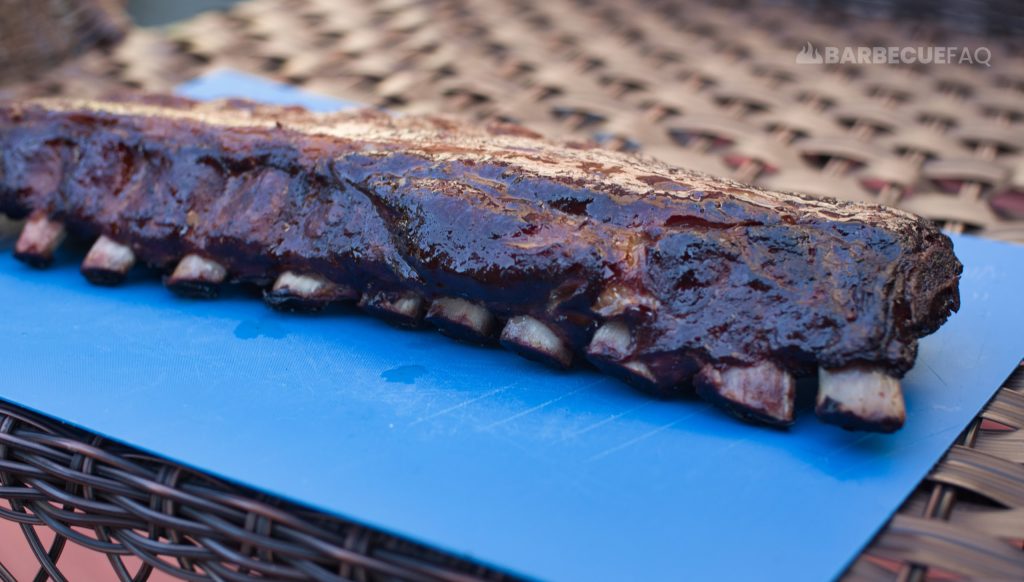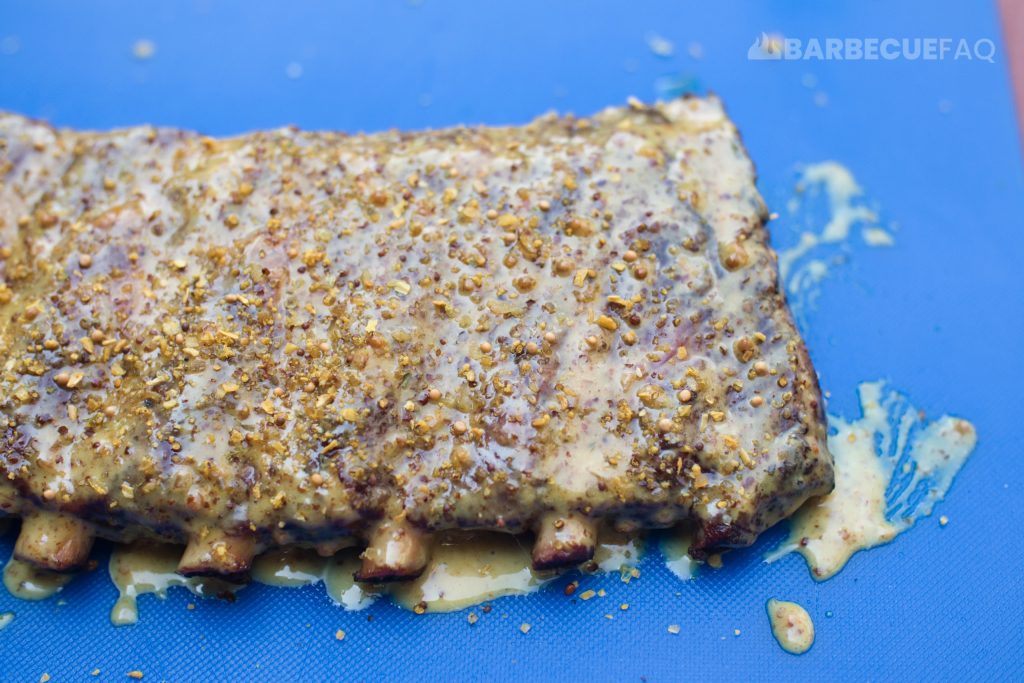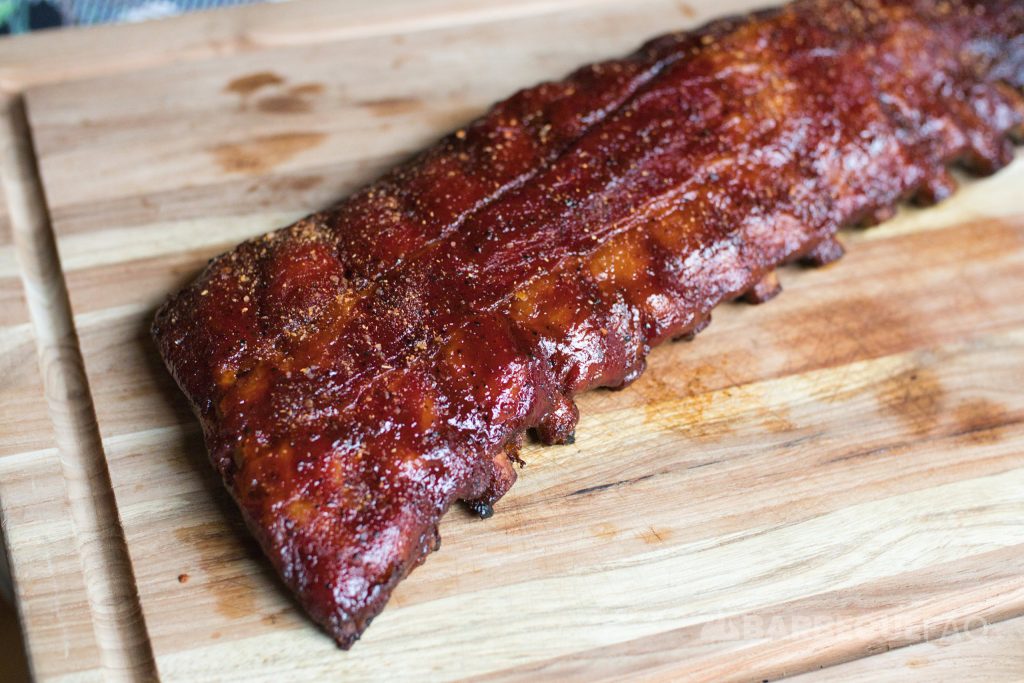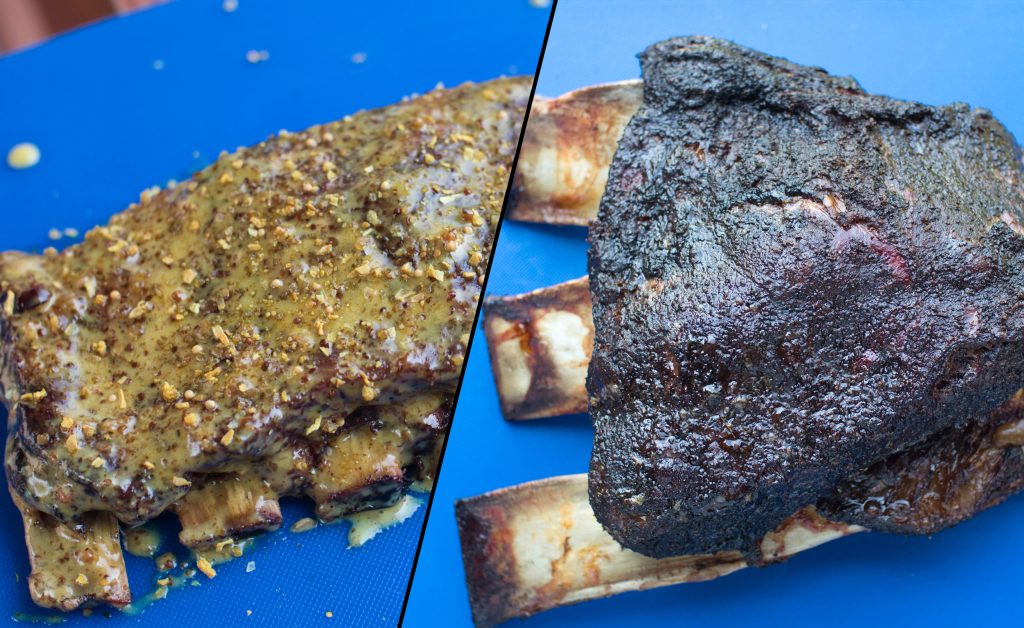BBQ sauce is put on ribs at the end of the cook OR when the ribs have reached tenderness.
I like to heat up my sauce first and then apply the sauce to the ribs while they’re resting for 10-15 minutes.

Do You Like Your Ribs “Wet” or “Tacky”?
A “web rib” puts barbecue sauce on after the ribs have finished smoking – like when they’re resting.

A tacky rib has the sauce so that it’s glazed onto the surface of the rib.
- Take 2-3 tbsp of a BBQ sauce, warm it in your microwave for 15 seconds.
- Take a basting brush and apply to your ribs when they’ve reached tenderness.
- Return to the smoker for 15 minutes or until the surface of the ribs looks glossy.

Why Nobody Sauces Ribs at the Start
Most BBQ sauce is tomato-based and is then sweetened with tons of sugar.
Depending on how you cook the ribs, if you were to put the sauce on at the start, you risk burning the sugar.
This is also why people smoke meat “low and slow” – 225-275F.
This temperature range avoids this risk with sugar-heavy rubs.
Burned sugar is incredibly off-putting and tastes super bitter.
Why Do People Use Mop Sauces Then?
Mop sauces are vinegar and fat-based and contain some sugar.

Store bought BBQ sauce is basically doctored-up sugar with some tomato paste.
A basic mop sauce is:
- A vinegar like ACV or white vinegar
- A hot sauce, which is vinegar-based
- An acid like lemon juice
- A fat like butter
- A sugar
This sauce is wicked thin.
You then take a meat mop and some of it ends up on the ribs, some ends up on the coals.
Where-as barbecue sauce is so thick that it sticks to the meat.
This is the same reason people don’t use BBQ sauce as a binder and they use mustard instead. Mustard is almost entirely vinegar which burns off when cooked over time.




2 comments
Guy McIntosh
Thank you
Dylan Clay
Happy to help Guy!